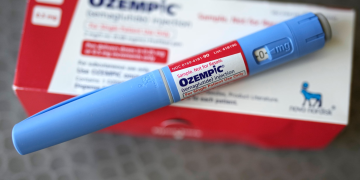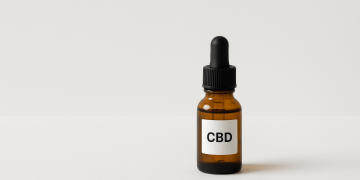Delta-10 THC is increasingly popular because it’s psychoactive, federally legal, and broadly available. In fact, you might’ve come across delta 10 vapes, edibles, and oils at your nearby gas stations. But you still might be wondering what exactly delta 10 THC is and how it compares to delta 9 THC–the infamous illicit compound you know and love.
Here we’ll review delta 10 compared to delta 9, covering their chemical structures, effects, products, and how they act on your brain and nervous system.
Delta-9 vs. Delta-10 in Hemp and Cannabis
Delta 9 THC and delta 10 occur naturally in hemp and cannabis plants. However, delta 9 is the most abundant psychoactive compound, reaching up to 25% of the plant’s overall chemical profile. In contrast, delta 10 appears in much smaller trace quantities. This potency difference is precisely why delta 9 THC products have been prominent for decades. Yet, you never heard of delta 10 THC until recently when manufacturers learned how to mass-produce the compound from federally legal, hemp-derived extracts.
Delta 10 and Delta 9 THC products are widely available online. However, you must remember that they’re not all the same. Consumers must check the labels when buying these products to determine whether they come from hemp or cannabis to anticipate the effects and possible interactions when taking supplements and medications. This step is also critical in distinguishing fake from authentic delta products.
Delta-9 vs. Delta-10: Chemical Structure
Delta 10 and delta 9 are both THC isomers, meaning they have the same number of atoms in a slightly different arrangement. Both have 21 carbon atoms, 30 hydrogen atoms, two oxygen atoms, and a double electron bond. The difference is the location of that double bond. Delta 9’s appear on the ninth carbon chain, while delta 10’s is on the tenth.
The difference seems negligible on the surface, but it significantly impacts how the compounds affect you. Scientists believe delta 9’s atomic arrangement makes it much more potent than delta 10, whose double bond exists just one chain away.
How Cannabinoids Work in the Brain and Body
Cannabis contains over 110 cannabinoids, like delta 10 and delta 9 THC. When you ingest these compounds, they interact with receptors in your body’s endocannabinoid system (ECS), which plays a prominent role in functions such as sleep, immunity, mood, and appetite.
Cannabis compounds primarily interact with ECS receptors known as:
- CB1: Found in the brain, central nervous system, lungs, kidneys, and liver, CB1 activation makes you feel high and euphoric.
- CB2: Found in the peripheral nervous system, especially in immune cells, CB2 activation contributes to cannabis’s therapeutic, anti-inflammatory properties.
By bonding with CB1 and CB2 receptors, delta 9 and delta 10 signal your body to promote overall wellness and euphoria.
Delta 9 vs. Delta 10 in the ECS
Delta-9 and delta-10 appear to interact with both CB1 and CB2 receptors. The difference is delta 9 has a much stronger binding affinity with CB1 receptors (the ones that get you high), and delta 10 appears to bind better with CB2 receptors. This could help explain the difference in their effects.
*More research is needed to determine delta-10’s exact binding mechanism.
Delta-9 vs. Delta-10: The Effects
Delta-9 delivers an intense “high,” with a considerable impact on your thought process, memory, coordination, perception, and feelings of joy and pleasure. Some benefits include:
- Euphoria
- Stress relief
- Pain relief
- Nausea relief
- Relaxation and sleepiness
- Hunger and appetite stimulation
However, delta 9’s potency can sometimes have unwanted side effects, such as paranoia and anxiety. Additionally, when you ingest too much delta 9 you can experience “couch lock,” where you feel overly groggy and sedated.
Delta 10 also gets you high, but its molecular structure and weaker CB1 binding affinity make the experience much milder than delta-9. The result is a unique, almost energizing experience. You might opt for delta 10 for a similar euphoria to delta 9 but without unwanted paranoia and anxiety. You might also choose delta 10 for the perfect daytime high, allowing you to function with little cognitive interference. Reported benefits from delta 10 include:
- Increased creativity
- Alertness
- Better memory
- Uplifting, “pick me up” feeling
- Increased focus
Delta-10 vs. Delta-9 products
Delta-10 is a naturally occurring cannabis compound. But unlike delta 9, which is extraordinarily potent, delta 10 appears in such trace amounts that you can’t possibly smoke enough flower to experience its effects. Because of that, Delta-10 products are mainly made in a lab through a semi-natural chemical conversion process.
Delta 10 products come in almost all the same forms as delta 9. Popular items include:
- Disposable pens
- Vape cartridges
- Gummies
- Tinctures
- Chocolate bars
- Pre-rolls
Are you wondering how delta 10 pre-rolls can exist if the plant doesn’t produce enough to get you high? Don’t be alarmed. While natural delta 10 hemp strains don’t exist, delta 10 pre-rolls products contain natural bud sprayed with delta 10 isolate. Delta 10 pre-rolls are safe to consume as long as you buy them from a trusted source.
The bottom line
Delta 10 is virtually the same as delta 9 on a chemical level, but its slight differences affect your brain, nervous system, and experience in distinct ways. For a milder, more uplifting, and federally legal high, delta 10 is undoubtedly a THC isomer worth considering.
























